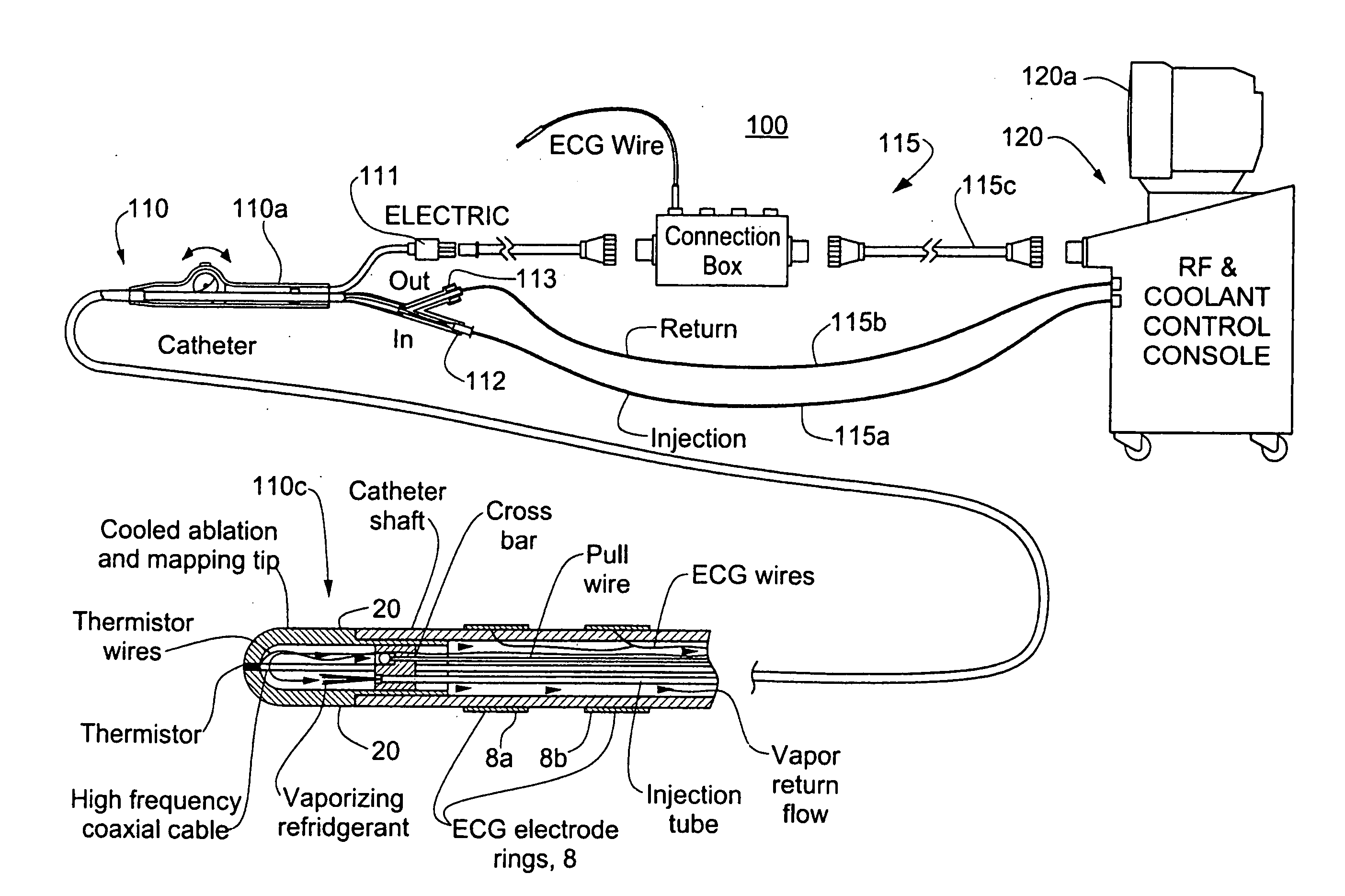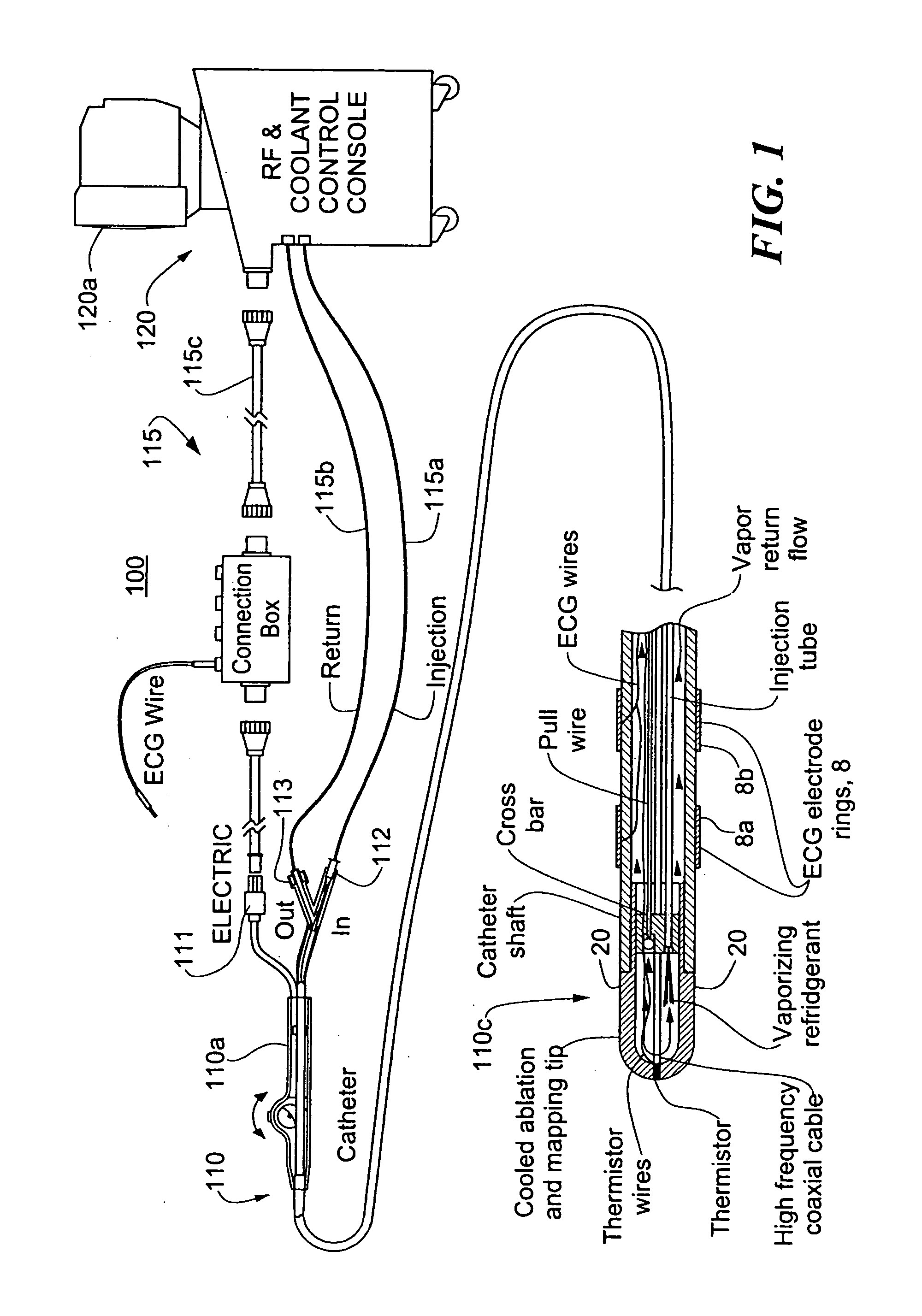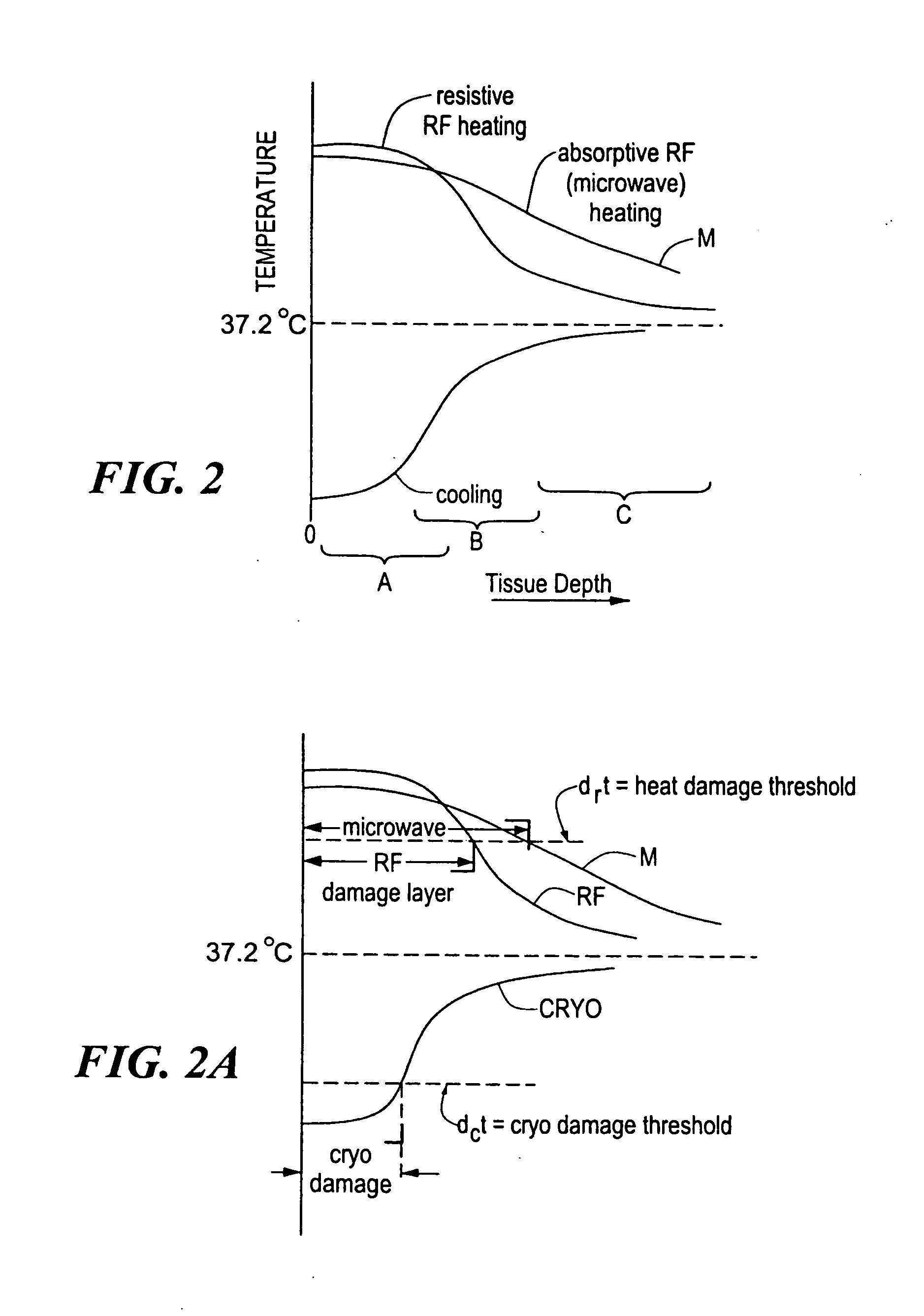Catheter with cryogenic and electrical heating ablation
a technology of electrical heating and catheter, which is applied in the field of cryocatheters and wands, can solve the problems of applying destructive thermal extremes to adjacent tissues, and achieve the effects of reducing time or movement sequence, reducing tip temperature, and facilitating operation
- Summary
- Abstract
- Description
- Claims
- Application Information
AI Technical Summary
Benefits of technology
Problems solved by technology
Method used
Image
Examples
Embodiment Construction
[0018]FIG. 1 shows a first embodiment of a cryogenic treatment system 100 of the present invention and illustrative elements thereof. System 100 includes a treatment catheter 110 having a handle 110a, and elongated cryogen transporting body 110b and a catheter tip 110c. The catheter 110 is connected by various conduits or cables to a console 120 which may, for example, have a display monitor 120a and other data entry or display accessories such as a keyboard, a printer and the like. The console 120 is connected to the catheter by various lines 115 which may include a coolant injection line 115a, a coolant return line 115b, and electrical cabling 115c which includes an RF drive line and may further carry console control outputs such as valve or switching signals, and outputs of various cardiac sensing, thermal sensing, mapping or other elements for catheter treatment or monitoring. As shown, the handle 110a is equipped with input ports for electrical connectors 111, a coolant injecti...
PUM
 Login to View More
Login to View More Abstract
Description
Claims
Application Information
 Login to View More
Login to View More - R&D
- Intellectual Property
- Life Sciences
- Materials
- Tech Scout
- Unparalleled Data Quality
- Higher Quality Content
- 60% Fewer Hallucinations
Browse by: Latest US Patents, China's latest patents, Technical Efficacy Thesaurus, Application Domain, Technology Topic, Popular Technical Reports.
© 2025 PatSnap. All rights reserved.Legal|Privacy policy|Modern Slavery Act Transparency Statement|Sitemap|About US| Contact US: help@patsnap.com



